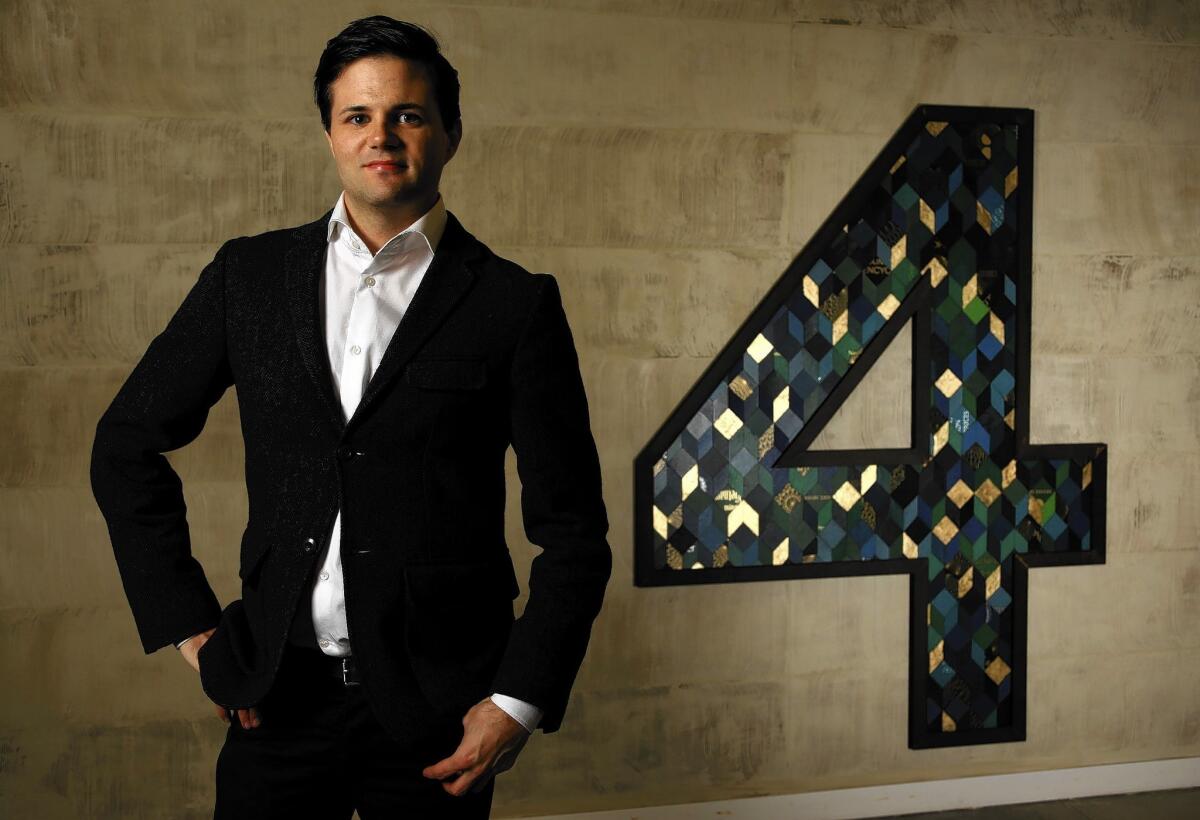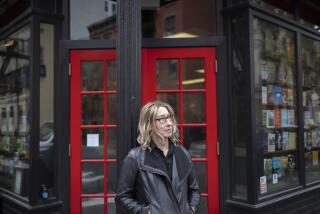You can judge his book covers by their design

- Share via
Interior designer Brian Gennett turns old book covers into striking mosaics for wall coverings, penny-tile surfaces and home décor objects that have been featured in Elle Decor magazine and are sold at Harbinger on La Cienega Boulevard.
Let’s cut right to it: Do people ever come at you for destroying perfectly good books?
It’s been mentioned to me jokingly, but, really, the books I am using are headed for the dump. There are bookstores that sell me covers that have fallen off books, and I also buy whole books at library and yard sales and the Goodwill and then recycle the paper pages. They are all books people don’t care about anymore, like outdated encyclopedias and medical books that most people would just throw out. The idea is to rescue them and give them another life that reflects their beauty. It’s another way to appreciate the feelings we have for books.
What do you think of people who color-coordinate their bookshelves and use books as coffee-table decoration and pedestals for tchotchkes?
I think it’s a little cringe-worthy to use books as decoration in your house, especially if you don’t read them. That’s a little silly. I am doing something different. I love the fact that I can take something that has history and meaning and transform it.
How did you come up with the idea of transforming book covers into mosaic tiles?
I started out as a fine artist, so I’ve always made things. When I lived in New York City, there was a big antique bookstore that would get shipments of old books with leather and marbled paper covers that had fallen off. I would buy them as artwork or use them as objects. When I got an interior design degree, I found it hard to find unique accessories that were not mass-produced. So I put two and two together and came up with the idea of cutting book covers into tiles and putting them back together in classic patterns, like herringbone and fish scales. I put them on a net backing so they could be used on walls, and then I designed panels, trays, tables, a headboard and a folding screen. I just finished floor-number panels for the elevator vestibules at the Barker Block lofts in the downtown arts district. I’d like to do a chest with the drawers clad in book covers, and my fantasy is to do an entire room — a foyer or a dining room — in dark-leather book cover walls in a fish-scale pattern.
What advice would you give DIY folks who are inspired by your concept?
First of all, book covers are really tough, especially the antiques, and surprisingly hard to shape by hand. I have to use a laser cutter to get what I want. Old encyclopedias and multi-volume sets will give you consistency in color and texture, and I love 1920s leather school yearbooks for the typography. For me, the more damaged the covers are, the better; if it’s sun-faded or scratched, it makes for a more interesting layout. I also apply gesso and gold leaf by hand to some of the tiles and arrange them into patterns and glue them to boards, then seal it all in acrylic. It’s labor-intensive.
Last question: Read any good books lately?
I would have to say no. I’ve cut them all up! No, I’m kidding. I don’t have a huge personal library, maybe 40 or 50 books, mostly on artists like Ed Ruscha and designers like Josef Hoffmann and Michael Smith. But I have been reading “Let’s Explore Diabetes With Owls” by David Sedaris. It’s all essays, so I like that you can read it in any order and finish a story in one sitting. And they are super-funny.


